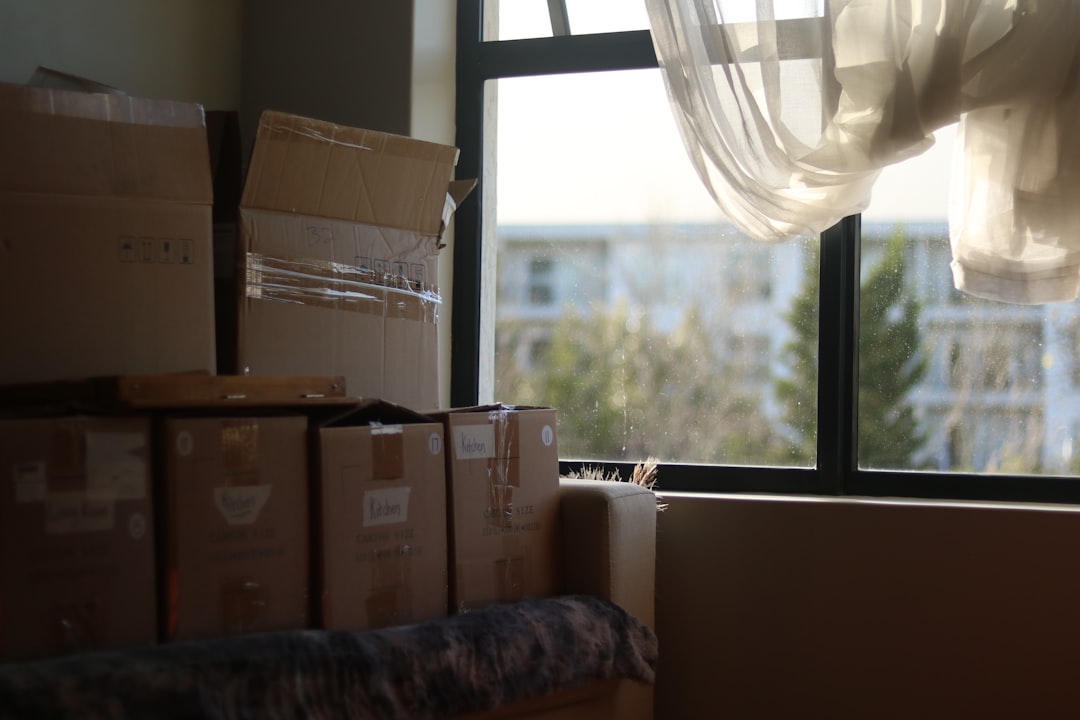Don't let the Boxes Bury You; How to Box Up Your Life for a Move
Relocating to your next adventure can be crazy stressful. But it doesn't have to be. Part 2 of my moving guide goes over how you should be packing your belongings to avoid damage and stress

I candidly planned to release a very different piece called “Hurricane Roulette,” this morning. Unfortunate circumstances actually forced me to move… again… for the second time in as many months.
While moving advice was fresh on my mind, I thought I’d release the second installment of my series about moving in pursuit of your next adventure. I hope some of you do find it helpful; there does seem to be a lack of quality advice on the topic.
If you’re not moving now, maybe this is something you can bookmark and return to during your next relocation.
Or, you could help me out and share it with a friend who needs the advice!
Normal outdoorsy content will be back next week.
Prepare to be Buried by Everything You Own
In part I, we went over the planning stage: picking your moving method, hiring a service, and making sure your belongings were insured for the long journey.
Now it’s time to put in the hard work, and start boxing things up. The earlier you start, the less frantic things will seem. I promise — you have more stuff than you think.
I recommend doing a box or two per day in the weeks leading up to your move, and a little more on the weekends. Ramp up as needed in the final week.
Of course, that process also gets a lot easier if you come prepared with the right packing tools.
Supplies
While there are places you can go to get boxes for free, I don’t recommend it. Your load will go astronomically easier if your belongings are packed into similar-sized containers, with no loose items.
Here’s what I’d recommend grabbing for starters:
2 small boxes for books
Specialty boxes for TV, paintings that you care about
1 specialty kit for glasses
1 specialty kit for plates
Sealable bag for your mattress, box spring
Wardrobe box for long coats, nice jackets, suits, etc. Put shoes in bottom
1-2 extra large boxes for light, large items (lampshades, sleeping bags, backpacking gear)
Bubble wrap
Stretch wrap, seriously once you figure this out, it changes the game
Tape gun
15-20 medium boxes. You want almost everything packed in this size box since they’re the most useful size
I’d buy these items from the U-Haul store. Their prices are lower than the alternatives I’ve found, and they have a 100% buyback policy for the materials you don’t use. Just make sure you keep your receipt.
Cushioning the Blow
I also recommend ordering moving blankets.1 As we discussed earlier, they have two purposes: protecting your furniture from scuffs and damage, and preventing objects from shifting in the move.
I ordered these from Amazon. They’re much cheaper in bulk, so order in advance; don’t be caught trying to buy them individually from a home improvement store.
If you hire a local mover, they’ll help you estimate how much they’re going to need. You can also sacrifice old blankets or towels you don’t care about for the job.
Lock it Down
If you’re using PODs or another self-moving service: you’ll also need your own lock. I bought two Discus Security Locks from U-Haul. They’re not too expensive. And as you can see below: not much of the shackle is exposed, making them tough to cut.
Extra Help
A few other nice items that are not necessary, but worth the expense:
Plastic tote boxes. These can stack higher than boxes without crushing, and are water resistant. They’re actually great for fragile or moisture-sensitive items
Air tags, or Tile Trackers. Slip one or two into nondescript boxes and you’ll know exactly where your belongings are at all times
Packing
Now the time has come to actually start the packing process. Here, I’ve got my own personal moving playlist, along with a few other valuable tips.
Remember last time, we discussed moving cost in price per cubic foot. Eliminating empty space in your move will save you a ton of money. There will be air at your destination; I promise you don’t need to pack your own.
Misc. Tips:
Use suitcases and luggage to pack your clothes
Taking packing as an opportunity to declutter, selling or donating unwanted items
Items that function as containers (dressers, cabinets, etc.) waste space if packed empty. Use them to store light or fragile items during transport
Secure furniture drawers with stretch wrap
Absolutely no liquids, spices, food items, etc. packed in the POD, truck, or U-Box. Liquids can leak. Food may attract pests while your belongings are stored in a warehouse
As you pack, number your boxes and snap a quick picture of what’s inside. Do not write what is inside the box, on the outside of the box. Instead, I keep a simple ledger, showing what’s packed where. Here’s my example:
This serves a few purposes. You’ll be able to see, at a glance, that you haven’t left anything valuable behind.
When you arrive, you’ll know which boxes you want to unpack first to reach specific items. If items are damaged, you already have documented proof of their condition before the move in order to file an insurance claim.
If one box — or heaven forbid, the entire shipment — is stolen, lost, or destroyed, you also have a full inventory to give to the insurance company.
Loading Day
Assuming you hired movers to load your POD or container: take steps to make sure their job is as fast and easy as possible, especially if they get paid by the hour.
Before the movers arrive, separate the boxes and bags they will not be taking. These are the things you will have with you at all times during the move:
An air mattress and sheets
Clothes for a few days
Critical private documents
Personal electronics and their chargers
Irreplaceable valuables
Items that are illegal or against policy to send via pod or moving company
Toiletries, medication
This isn’t a complete list. As a general rule: Anything you know you will need before your items are delivered at your new home should be here.
If you can: put these items in a room or closet by themselves and close the door. Explain to the movers that everything not in that room needs to go.
Be prepared with the moving supplies the dispatcher or receptionist asked you to get, along with a tape gun and scissors, or a knife.
If you have a large item you’re on the fence about keeping, let the movers know before they start working. For me it was my old couch. I didn’t think everything would fit. Paying for a second POD would’ve added $2,000 to the cost of my move; well over the replacement cost of even a nice quality piece of furniture.
Special Considerations
After the movers leave, slap your locks on the POD or U-box — assuming you took my advice — and start cleaning out your almost-empty home. Inflate your air mattress, and luxuriate in your minimalistic lifestyle.
Gun owners have a little bit more work to do.
CCW Permit Holders
More than half of U.S. states allow legal gun owners to carry their firearms concealed, on their person, without any additional paperwork. If you have a concealed carry permit, check to see if the states you’ll be traveling through honor it.
Most gun stores actually have a reference guide they’ll be happy to let you use.
Everyone Else
This can be limiting though, especially depending on which states you have to drive through. Sometimes it’s easier to simply perform a dealer transfer.
Find a gun store close to your new address. Call them and ask if they’d be willing to receive the gun for you. Get their FFL number, and an email address or phone number.
Bring your firearm(s) to a gun store close to you. Share the FFL number and contact info. You will have to pay a fee for the transfer — around 75$.
Wait for the gun store to call you to let you know when you can pick it up
Go into the store and do a NICS check. Assuming you haven’t committed any crimes since you initially purchased the gun, you should be on your way.
And with that done, the hard part is over. Rejoice!
In the final installment, I’ll go over the home stretch: the drive to your new home. If you’re new here, and you found this guide helpful: consider subscribing to Cole’s Climb. It really helps me out, especially on longer guide posts like this one that are more time consuming to put together.
Next week, I’ll be back to my regularly scheduled outdoor writing. Meantime — if you have any moving tips, please feel free to share them here!
If you went with U-Box, you actually get a bunch of these thrown in for free.






This is all such great advice! I don't plan on moving anytime soon, but for those who are, this is wonderful!
Hi Cole…. I’ve just decided if I ever plan on moving I’m going to hire you to do the job. Wish all moving companies that do this for a living were as thorough and careful as you were/are. Hoping by the time you read this you are settled in, comfy, safe and happy. 🚚🚛